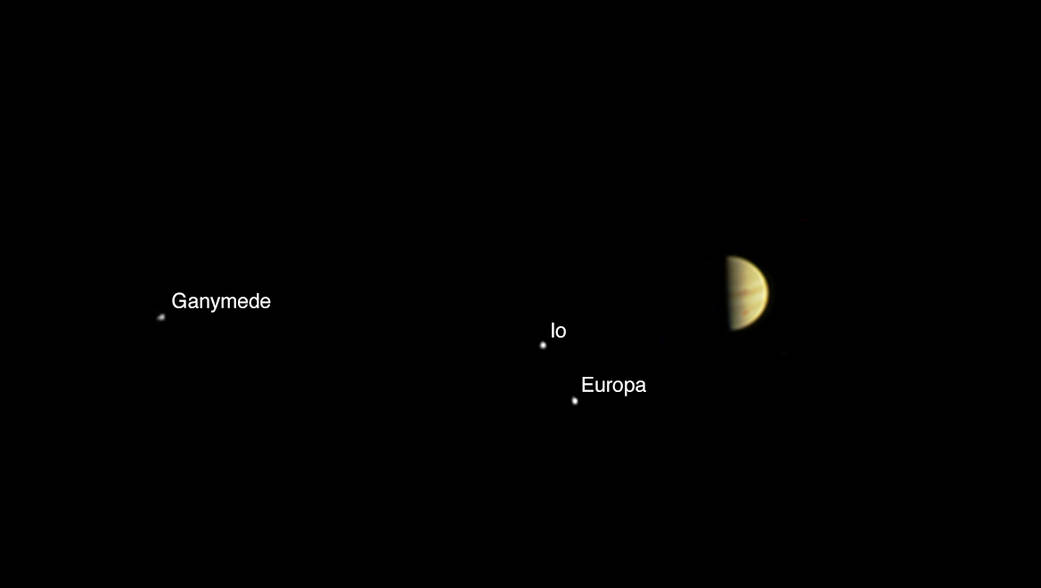
NASA's Juno spacecraft is now in Jupiter's backyard.
Juno, which is scheduled to begin orbiting the giant planet on Monday (July 4), entered Jupiter's sphere of influence last week, mission team members said.
"We've just crossed the boundary into Jupiter's home turf," Juno principal investigator Scott Bolton, of the Southwest Research Institute in San Antonio, said in a statement today (June 30). "We're closing in fast on the planet itself and already gaining valuable data." [Photos: NASA's Juno Mission to Jupiter]
Since its August 2011 launch, Juno had been zooming through an environment dominated by the stream of charged particles flowing from the sun called the solar wind. But on June 24, the probe passed through the "bow shock" just outside Jupiter's magnetosphere — the bubble in which the giant planet's magnetic field controls the movement of particles.
This was a dramatic event that Juno's instruments picked up, mission scientists said.
"The bow shock is analogous to a sonic boom," Juno team member William Kurth, of the University of Iowa, said in the same statement. "The solar wind blows past all the planets at a speed of about a million miles per hour, and where it hits an obstacle, there's all this turbulence."
By June 25, Juno was fully inside Jupiter's magnetosphere, which NASA officials said is the largest structure in the solar system.
Get the Space.com Newsletter
Breaking space news, the latest updates on rocket launches, skywatching events and more!
"If Jupiter's magnetosphere glowed in visible light, it would be twice the size of the full moon as seen from Earth," Kurth said.
And Earth-based observers wouldn't even be seeing the longest dimension of the teardrop-shaped magnetosphere, which extends about 5 astronomical units (AU) beyond Jupiter, NASA officials added. (One AU is the distance from Earth to the sun — about 93 million miles, or 150 million kilometers.)
Juno's measurements suggest that the boundary region around Jupiter's magnetosphere is surprisingly complex; the mission team plans to investigate this complexity further, researchers said.
If all goes according to plan, Juno will circle Jupiter more than 30 times over the next 18 months or so, gathering a variety of data by using nine different science instruments. The mission's main goals include mapping out Jupiter's magnetic and gravitational fields, and characterizing the huge planet's internal structure, especially whether or not it has a core.
Juno's observations should help scientists better understand the origin and evolution of Jupiter and the solar system as a whole, mission team members have said.
"What Juno's really about is learning about the recipe for how solar systems are made," Bolton said during a news conference today.
Follow Mike Wall on Twitter @michaeldwall and Google+. Follow us @Spacedotcom, Facebook or Google+. Originally published on Space.com.
Join our Space Forums to keep talking space on the latest missions, night sky and more! And if you have a news tip, correction or comment, let us know at: community@space.com.

Michael Wall is a Senior Space Writer with Space.com and joined the team in 2010. He primarily covers exoplanets, spaceflight and military space, but has been known to dabble in the space art beat. His book about the search for alien life, "Out There," was published on Nov. 13, 2018. Before becoming a science writer, Michael worked as a herpetologist and wildlife biologist. He has a Ph.D. in evolutionary biology from the University of Sydney, Australia, a bachelor's degree from the University of Arizona, and a graduate certificate in science writing from the University of California, Santa Cruz. To find out what his latest project is, you can follow Michael on Twitter.